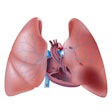North Carolina researchers are using x-ray to track devices used in minimally invasive surgical procedures -- and optimizing the number of images to minimize radiation dose -- according to a study to be presented at next month's 2013 Institute of Electrical and Electronics Engineers (IEEE) International Conference on Robotics and Automation meeting in Karlsruhe, Germany.
A study team from North Carolina State University and the University of North Carolina at Chapel Hill (UNC) is using the tool to track devices such as steerable needles, while a computer determines the minimum number of x-ray exposures that will be needed.
The algorithm also determines the optimum angles needed to provide information on the location of interventional devices in the body, said lead study author Dr. Edgar Lobaton from North Carolina State in a statement.
A computer program lets surgeons input the procedure type and choose how precise the data location needs to be, variables that are then plugged into the algorithm, which outputs the optimum number of x-rays and the acquisition angles, the group said.
If a general idea of where a device is located is sufficient, for example, only two or three x-rays may be needed, wrote Lobaton and colleagues Jingua Fu, a former graduate student at UNC; UNC doctoral student Luis Torres; and Dr. Ron Alterovitz, also of UNC.
The study was supported by the U.S. National Science Foundation and the U.S. National Institutes of Health.



















